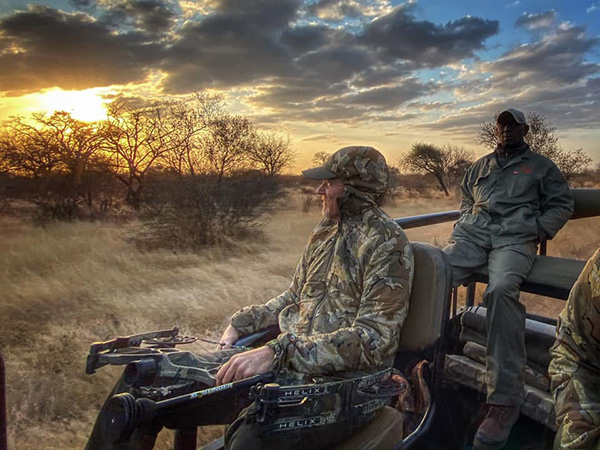
If you’re a serious bowhunter, you should have one overriding reason to practice, and that is to become a better shot under hunting conditions.
It’s OK to shoot your bow for fun at the range or in your backyard when conditions are perfect. However, the fastest way to improve your hunting accuracy is to practice with a defined purpose, specific goals in mind and under extreme conditions. For example, those of us who have trouble shooting in the wind avoid practicing when it’s windy. So, obviously, we never get better at shooting in the wind.
In order to become the best bowhunter you can be, you need to have the discipline to break this cycle and override your natural tendencies. You must force yourself to practice and improve those things you do poorly.
There are three things you must do to shoot well in the wind: One, estimate and compensate for wind drift. Two, choose and set up your equipment to better handle the wind. Three, develop “wind-resistant” shooting form and timing.
The only way to know how far your arrows will drift in any given wind is to practice under a variety of wind conditions using the exact equipment you will be hunting with. The more severe the wind, the more your practice sessions will teach you.
Start by finding an open area where you can practice with a steady wind. Use a portable target. By changing your position in relation to the target, you can practice in a headwind, a tailwind and every wind direction between. Always pay attention to the angle of the wind. If you’re shooting directly into the wind or directly with the wind, your arrows will drift less than in a crosswind. Learn how far your arrows drift in every situation. Write it down. You will eventually learn how different wind speeds and angles affect your arrow’s flight.
It’s important to measure wind speed so you can learn to estimate it accurately. You may want to invest in a handheld wind-speed indicator (anemometer). There are also wind-speed apps available for smartphones that seem fairly accurate.
When hunting, you need to be able to instantly estimate how far off target to hold in any type of wind. Unfortunately, there’s not a rule of thumb that works for all arrow speeds and all arrow designs. The distance your arrow will drift in the wind is dependent on three variables: the velocity of the wind, the direction of the wind and the time the arrow is in the air. The bottom line is you have to figure out how much your arrow is going to drift at any given wind speed, and at any given wind angle and at any given yardage.
It’s nearly impossible to memorize all these variables at all distances. So, you have to figure out what your arrow is going to do at one distance and at one wind speed and then extrapolate it to any other set of conditions. Wind drift has a more or less linear relationship to wind speed and to the distance of the shot, so this extrapolation will be fairly accurate.
Go out on a windy day with your bow and a wind gauge. Maybe start by shooting at 40 yards with the wind blowing at a 90-degree angle to your arrow’s path. Remember, you have to use the broadheads you’ll be hunting with or it won’t be an accurate test.
As an example, let’s say you’re shooting 40 yards with a direct crosswind that is blowing 20 miles an hour and you miss the dot by 8 inches. Now, you can extrapolate and say that for every 10 miles an hour of wind velocity and every 20 yards of distance, your arrow drifts about two inches.
Now you just have to remember that data point and do a little math each time you shoot in the wind. For example, if you shoot at 60 yards in a 10 mile an hour wind, your arrow is going to drift six inches. And if you shoot 20 yards in a 40 mile an hour wind, you’re going to drift eight inches.
All this extrapolation is based on a wind coming from a right angle to the arrow’s flight path. It gets more difficult when the wind is blowing at a quartering angle You’ve got to develop a fudge factor. The only way to do that is by practicing in the wind as often as possible.
Here’s a general rule of thumb that might help: If the wind is coming from 12 o’clock or 6 o’clock, there will be no sideways drift. If it’s coming from 30 degrees off of 12 or 6, it will drift the arrow half the distance of a perpendicular wind. Wind coming from a 45-degree angle will cause about two-thirds as much drift as a perpendicular wind. If the wind is from 70 degrees, it will drift seven eighths as much as a 90-degree wind. Intuitively, most of us would assume that a 45-degree wind would drift an arrow half as far as a 90-degree wind would.
In reality, it drifts it much more than half as far. The take-home point here is that a quartering wind drifts your arrow further than you might think.
For additional information about hunting packages available at Bushmen Safaris, please visit www.bushmensafaris.com or contact us at 208.322.5902 or [email protected] to learn more about bowhunting in South Africa with Bushmen Safaris.
Portions of this article originally appeared on the Bowhunting Mag website.